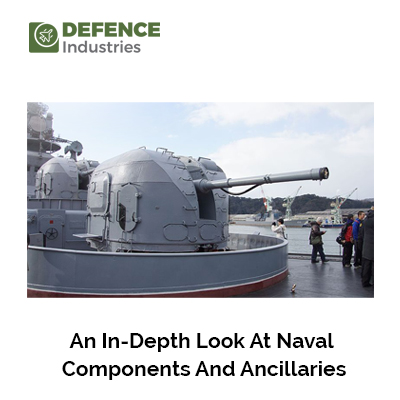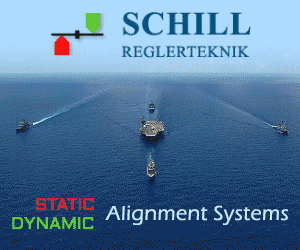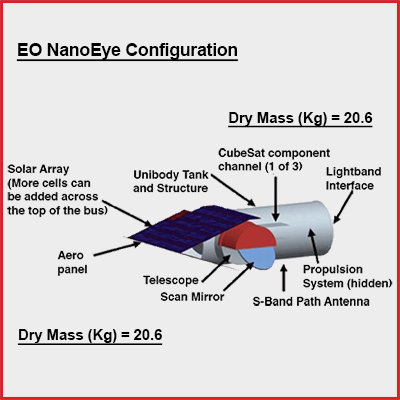Articles
An In-Depth Look at Naval Components and Ancillaries

Introduction:
Naval components and ancillaries play a crucial role in the functioning and efficiency of naval vessels, ranging from warships to submarines. These components encompass a wide range of systems, equipment, and accessories designed to ensure the operational readiness, safety, and performance of naval fleets. In this article, we will delve into the key components and ancillaries that contribute to the seamless operation of naval vessels, highlighting their importance, functionality, and advancements in modern maritime technology.
1. Propulsion Systems: Naval vessels rely on advanced propulsion systems to navigate through water efficiently. These systems include diesel engines, gas turbines, and nuclear reactors, depending on the type and purpose of the vessel. Diesel engines are commonly used in smaller ships and submarines, providing a balance between power and fuel efficiency. Gas turbines are favored for their high power output, making them suitable for fast patrol boats and destroyers. Nuclear reactors, found in aircraft carriers and submarines, offer extended endurance and operational range without the need for frequent refueling.
2. Navigation and Communication Equipment: Navigation and communication are essential for maritime operations, ensuring vessels can navigate accurately and maintain contact with command centers and other ships. Modern naval vessels are equipped with advanced radar systems, GPS navigation, sonar technology for underwater navigation, and communication systems such as radio, satellite, and encrypted data networks. These technologies enable real-time situational awareness, navigation in challenging environments, and secure communication channels vital for mission success.
3. Weapons Systems: Naval components also include a diverse range of weapons systems tailored to the vessel's role and mission objectives. These may include naval guns, missile launchers, torpedoes, anti-aircraft systems, and anti-submarine warfare equipment. Naval guns provide surface-to-surface and surface-to-air capabilities, while missile launchers offer long-range precision strikes against sea and land targets. Torpedoes are crucial for anti-submarine warfare, and anti-aircraft systems defend against aerial threats, ensuring the vessel's defense and offensive capabilities are well-rounded and effective.
4. Sensor and Surveillance Systems: To enhance situational awareness and threat detection, naval vessels are equipped with advanced sensor and surveillance systems. These include radar arrays, infrared sensors, electro-optical cameras, acoustic sensors for underwater detection, and passive surveillance systems. These sensors work in tandem to detect and track potential threats, monitor maritime traffic, and provide early warning alerts, allowing naval crews to respond swiftly and effectively to changing operational environments.
5. Environmental Control Systems: Maintaining a habitable and functional environment onboard naval vessels is crucial for crew comfort, health, and operational efficiency. Environmental control systems regulate air conditioning, heating, ventilation, and humidity levels, creating a comfortable and safe living and working environment for crew members. These systems also include fire suppression and detection systems, ensuring rapid response to onboard emergencies and minimizing risks to personnel and equipment.
6. Power Generation and Distribution: Naval vessels require robust power generation and distribution systems to support their diverse energy needs, including propulsion, electronics, weapons systems, and onboard facilities. Advanced generators, electrical distribution panels, and power management systems ensure a reliable and stable supply of electricity throughout the vessel, optimizing energy efficiency and operational performance. Additionally, energy storage systems such as batteries and capacitors provide backup power during emergencies or power outages.
7. Damage Control and Safety Systems: In the event of damage or emergencies, naval vessels are equipped with comprehensive damage control and safety systems to mitigate risks and ensure the safety of crew members and the vessel itself. These systems include watertight compartments, fire suppression systems, emergency lighting, evacuation procedures, and medical facilities. Advanced damage control technologies, such as automated flooding detection and compartment sealing, enhance the vessel's survivability and resilience in challenging situations.
8. Maintenance and Support Equipment: To maintain operational readiness and performance, naval vessels rely on a range of maintenance and support equipment. This includes onboard workshops, spare parts storage, maintenance tools, and diagnostic equipment for routine maintenance, repairs, and upgrades. Additionally, logistical support systems enable efficient resupply of fuel, ammunition, and provisions during extended deployments, ensuring naval fleets remain mission-ready and capable of sustained operations.
9. Training and Simulation Systems: Effective training is essential for naval personnel to operate complex systems and equipment effectively. Training and simulation systems onboard naval vessels provide realistic scenarios and simulations for crew training, skill development, and emergency response drills. These systems utilize virtual reality, simulators, and computer-based training modules to enhance crew proficiency, decision-making skills, and operational readiness, preparing them for diverse mission scenarios and challenges.
10. Advancements in Naval Technology: Advancements in technology continue to drive innovation in naval components and ancillaries, enhancing naval capabilities, efficiency, and effectiveness. Key areas of advancement include unmanned systems such as drones and autonomous underwater vehicles (AUVs) for reconnaissance and surveillance, stealth technologies to reduce radar signatures and enhance stealth capabilities, and integrated sensor fusion systems for enhanced situational awareness and threat detection. Additionally, developments in materials science, cybersecurity, and artificial intelligence are shaping the future of naval warfare, emphasizing the importance of continuous technological evolution and adaptation in maritime operations.
Conclusion:
Naval components and ancillaries form the backbone of modern naval vessels, encompassing a wide range of systems, equipment, and technologies designed to ensure operational readiness, safety, and mission success. From propulsion and navigation to weapons systems, sensors, and safety equipment, these components play a crucial role in enhancing maritime capabilities and maintaining naval superiority. With ongoing advancements in technology and innovation, the future of naval warfare will continue to evolve, driven by the quest for greater efficiency, effectiveness, and resilience in challenging maritime environments.









